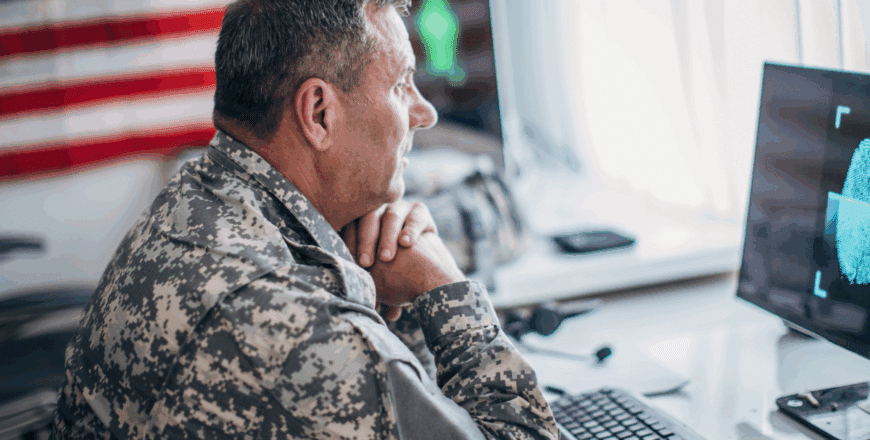
- Description
- Curriculum
- Reviews
Organizational behavior is the structured study of how people–individually or in groups–act within business organizations. With the thoughtful application of this understanding, companies can build organizational structures to help people act and perform more effectively. As an applied science, information gained about effective practices in one organization can be applied to others.
This DSST exam was developed to enable schools to award credit to students for knowledge equivalent to that learned by students taking a course in Organizational Behavior. This exam covers topics such as such as scientific approaches; research designs; data collection methods; individual processes and characteristics; interpersonal and group processes; organizational processes; change and development processes.
Exam Outline
The following is an outline of the content areas covered in the examination. The approximate percentage of the examination devoted to each content area is also noted.
I. Organizational Behavior Overview – 10%
- The field of organizational behavior
- Definition and framework
- Fundamental concepts
- History
- The study of organizational behavior
- Scientific approaches
- Research designs
- Data collection methods
II. Individual Processes and Characteristics – 30%
- Perceptual processes
- Personality
- Attitudes and emotions
- Learning Processes
- Motivation
- Work Stress
III. Interpersonal and Group Processes – 30%
- Group dynamics
- Group Behavior and conflict
- Leadership and influences
- Power and politics
- Communication processes
IV. Organizational Processes and Characteristics – 15%
- Organizational decisions-making
- Organization structure and design
- Organization culture
V. Change and Development Processes – 15%
- Basic processes
- Concepts of change
- Applications and techniques of change and development
Sample Questions
All test questions are in a multiple-choice format, with one correct answer and three incorrect options. The following are samples of the types of questions that may appear on the exam.
1. An employee who bases his or her job-evaluation rating on an unfair rating form may be:
- stereotyping supervisory personnel
- engaging in perceptual defense
- making a causal attribution
- learning about job tasks
2. Which of the following accurately lists needs in Maslow’s hierarchy?
- Physiological, power, growth and esteem
- Security, esteem, power and self-actualization
- Security, belonging, mastery, psychological and self-esteem
- Physiological, security, belonging, esteem and self-actualization
3. Operant conditioning is primarily concerned with:
- physiological causes of behavior
- cognition of behavior
- consequences of behavior
- punishment of behavior
4. Which of the following is one reason why Herzberg’s two-factor theory is viewed as controversial?
- It states that job satisfaction and dissatisfaction do not exist on a single continuum
- It does not explain why people desire to achieve
- It states that organizational policies have too strong and impact on intrinsic rewards
- It does not explain why people choose particular behaviors to accomplish work related goals
5. Standing close to another individual to communicate a sense of power is an example of:
- an authority stance
- a stereotype
- a nonverbal cue
- a leadership behavior
6. From the organization’s perspective, which of the following is an example of a positive norm?
- The appearance of working hard, regardless of results
- The use of group sanctions against the person who exceeds productivity levels
- A general practice of arriving to work on time
- A supervisor’s public criticism of a subordinate’s poor performance
7. Which of the following statements best describes the path-goal theory of leadership?
- It focuses on goals to achievement.
- It measures the philosophical assumptions behind a leader’s style.
- It looks at leader behaviors, subordinate characteristics, and environmental pressures.
- It emphasizes personality traits critical for effective leadership.
8. George Bacon is considered one of the leading surgeons in the field of artificial heart transplants. Even though he is not associated with Western Memorial Hospital, he exerts much influence over many of the surgeons there. Such influence is best termed:
- Legitimate power
- Coercive power
- Reward power
- Expert power
9. Which of the following is a major feature of a matrix organization?
- Provision for horizontal communication
- Establishment of profit centers
- Presence of employees with two supervisors
- Increased separation of line and staff responsibilities
10. Which of the following statements is NOT true about organizational development (OD)?
- It is a system-wide change effort
- It frequently leads to new organizational structures
- It is characterized by participatory methods of change
- It emphasizes short-term rather than long-term methods of change
Answers to sample questions:
- 1. B; 2. D; 3. C; 4. A; 5. C; 6. C; 7. C; 8. D; 9. C; 10. D
-
1DSST Overview
-
2The Field of Organizational Behavior
-
3The Study of Organizational Behavior
-
42. Individual Processes & Characteristics, Attitudes and Emotions
-
52. Individual Processes & Characteristics, Learning
-
62. Individual Processes & Characteristics, Motivation
-
72. Individual Processes & Characteristics, Perception and Personality
-
82. Individual Processes & Characteristics, Stress
-
93. Interpersonal & Group Processes, Communication
-
103. Interpersonal & Group Processes, Conflict
-
113. Interpersonal & Group Processes, Group Dynamics & Behavior
-
123. Interpersonal & Group Processes, Leadership
-
133. Interpersonal
-
144. Organizational Processes & Characteristics: Culture
-
154. Organizational Processes & Characteristics: Decision-Making
-
164. Organizational Processes & Characteristics: Structure & Design
-
175. Change & Development Processes
-
18Course Videos








